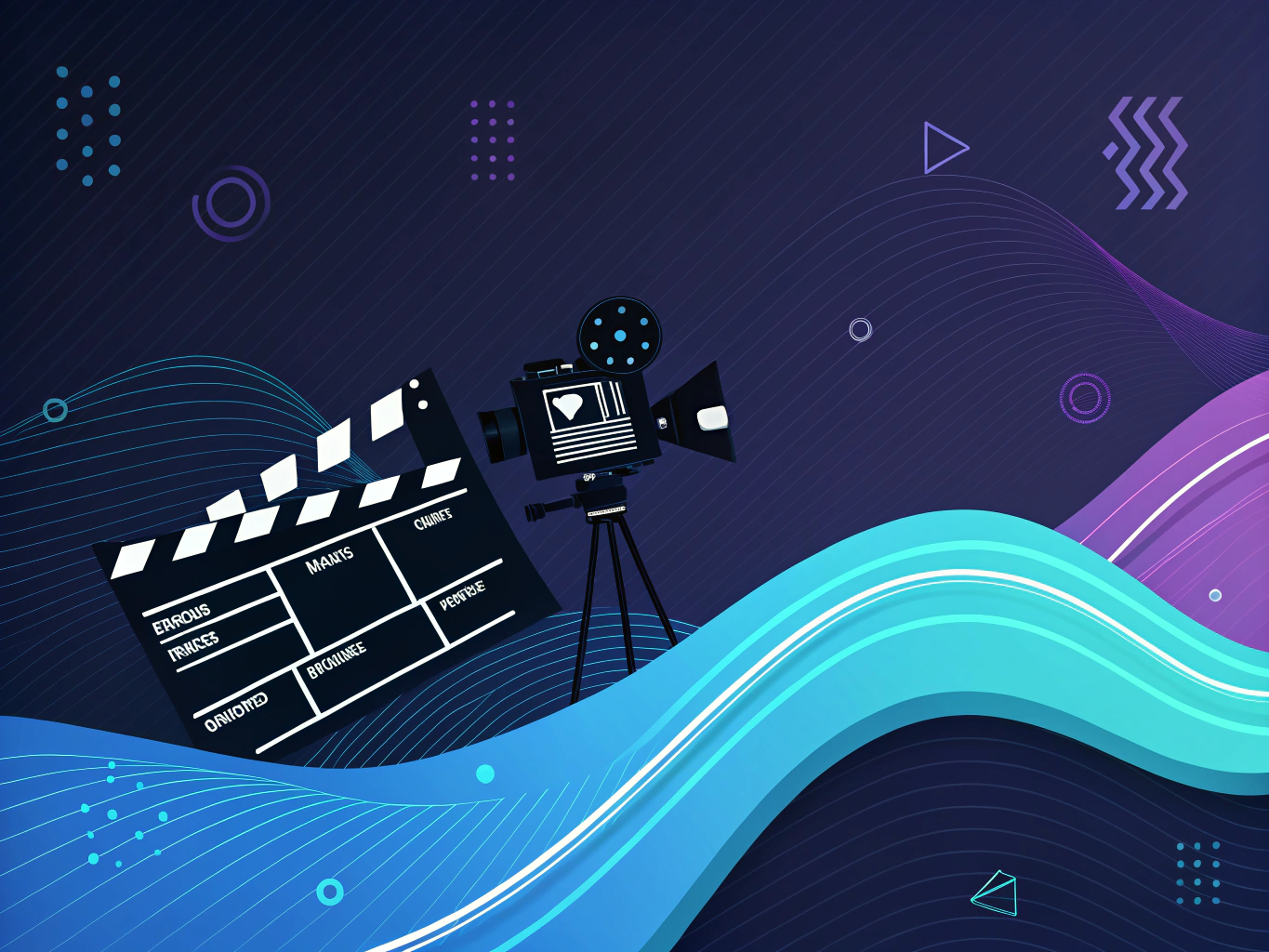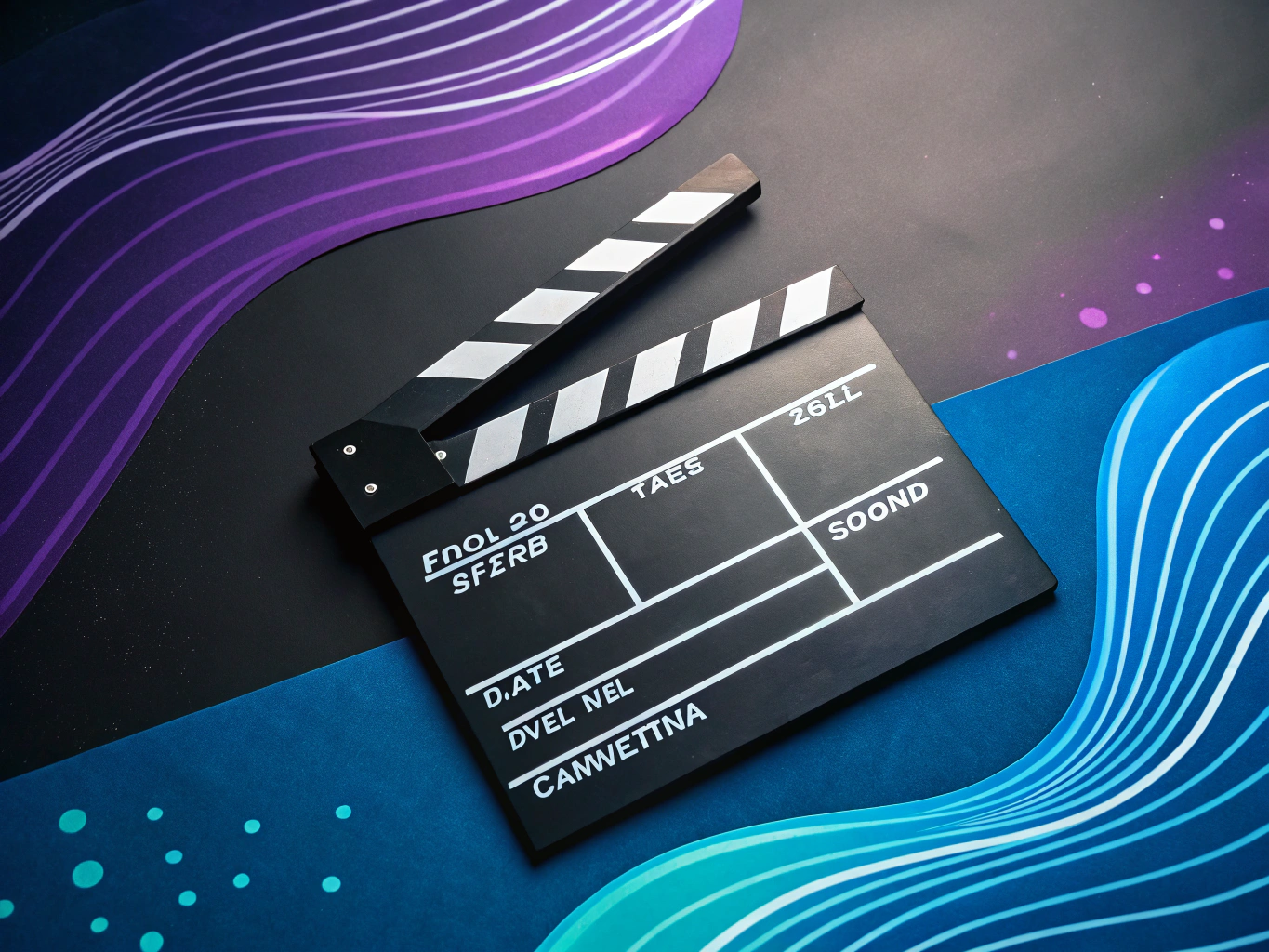Making Social Media Videos: The Ultimate Guide for 2024
Let’s be honest – we’ve all watched those perfectly polished social media videos and thought “I could never make something like that.” Maybe you’ve even downloaded a few video editing apps, stared at the interface for 20 minutes, and quietly closed them, feeling overwhelmed.

Here’s the thing: creating engaging social media videos isn’t about having the fanciest equipment or mastering every feature in Premiere Pro. It’s about understanding what actually connects with your audience and building a sustainable system to deliver it consistently.
I’ve spent years helping brands and creators navigate the intersection of content and technology, and I can tell you – the gap between “I wish I could make videos like that” and “I just posted my first viral hit” is smaller than you think.
Understanding the Current Social Video Landscape

The social video world has evolved dramatically. Remember when a basic phone video with decent lighting was enough to stand out? Now we’ve got AI video editors, virtual camera operators, and tools that can generate entire video scripts from a single prompt. It’s both exciting and slightly terrifying.
But here’s what hasn’t changed: humans still connect with authentic stories well told. The tools have gotten fancier, but the fundamentals of what makes a video resonate remain surprisingly consistent.
Platform-Specific Video Dynamics
Each social platform has its own video personality. TikTok rewards pattern interruption and quick hooks. Instagram prefers polished aesthetics with a hint of authenticity. YouTube values comprehensive content that solves specific problems. LinkedIn? It wants you to look professional while pretending you’re not trying too hard.
Current Trends Shaping Social Video
- Micro-storytelling (15-30 second complete narratives)
- Pattern interruption openings (“Wait, what am I looking at?”)
- AI-enhanced production (from automated captions to full video generation)
- “Behind the scenes” authenticity mixed with high production value
- Cross-platform optimization (one video, many formats)
Essential Equipment for Quality Video Production
Let’s address the elephant in the room: gear anxiety. You know that feeling when you’re convinced you need a $3000 camera setup to start making videos? Yeah, that’s mostly nonsense.
The Camera Question: Phones vs. Professional Equipment
Here’s a truth that camera manufacturers don’t want you to know: your phone is probably good enough to start. Modern smartphones have better video capabilities than the professional cameras we used just a decade ago. The iPhone 15 Pro, Samsung S24 Ultra, or Google Pixel 8 can all shoot gorgeous 4K video with excellent stabilization.
Lighting: Your Secret Weapon
If you’re going to invest in anything first, make it lighting. Good lighting can make phone footage look professional, while bad lighting can make expensive camera footage look amateur. Start with a basic ring light ($30-50) or, even better, learn to use natural window light effectively (free!).
Audio: Where Most Videos Fail
Viewers will forgive slightly shaky footage or imperfect lighting, but poor audio is an instant turn-off. A decent lavalier mic ($20-30) or directional microphone ($50-100) will immediately elevate your content quality. And please, for the love of all things digital, avoid recording in echoey rooms – blankets on walls are your budget-friendly acoustic treatment.
Building Your Video Creation Workflow

The difference between occasional video creators and consistent content producers isn’t talent – it’s systems. You need a repeatable workflow that doesn’t make you want to quit after each video.
Pre-Production Planning
Start with a simple content calendar. I’m not talking about some complex editorial calendar that takes longer to maintain than actually creating content. Just a basic spreadsheet with video ideas, key points, and planned posting dates. The goal is to never sit down to film and think “what should I make today?”
Remember: The best video system is the one you’ll actually use consistently. Start simple, refine based on what works, and scale up gradually. Your first videos won’t be perfect, but they’ll be published – and that’s what matters most.
Essential Equipment and Setup for Quality Videos
Let’s be real – you don’t need a Hollywood budget to create engaging social videos. But you do need to understand what equipment actually matters versus what’s just fancy gear collecting dust.
A. Smartphone vs. Professional Camera Options
The eternal debate: should you drop $3k on a fancy camera or stick with that rectangle in your pocket? Here’s the thing – modern smartphones are absolute beasts at video. The iPhone 15 Pro shoots in ProRes, the Pixel 8 Pro has computational magic that rivals DSLRs, and Samsung’s latest can zoom to the moon (literally).
But there’s a catch – sensor size still matters. Professional cameras give you that dreamy background blur and better low-light performance that screams “premium content.” They’re like having a trained chef versus a really good home cook. Both can make great meals, but one has more tools at their disposal.
Smartphone Video Tips
- Lock your exposure and focus before recording
- Use a gimbal for smooth movement (DJI OM 6 is my go-to)
- Shoot in 4K even if you’ll export in 1080p – gives you room to crop
- Grid lines on = better composition
B. Lighting Solutions for Every Budget
Here’s a secret that took me years to learn: good lighting matters more than an expensive camera. It’s like makeup – even the most photogenic person looks better with proper lighting.
Natural Lighting
Window light is your best friend. Position yourself facing a large window, ideally on an overcast day. Add a $20 foam board reflector on the opposite side and boom – you’ve got studio-quality lighting for the price of lunch.
Artificial Lighting
If you’re ready to invest, start with a key light and build from there. The Aputure MC RGBWW is my current favorite – portable, app-controlled, and color-accurate. For budget options, Neewer makes solid LED panels that won’t break the bank.
C. Audio Equipment Essentials
Bad audio will kill your video faster than shaky footage. Your viewers might forgive slightly blurry video, but they’ll bounce if your audio sounds like it was recorded in a tin can.
Microphone Options
- Lavalier mics: Great for talking head videos (Rode Wireless GO II)
- Shotgun mics: Perfect for run-and-gun filming (Rode VideoMic Pro+)
- USB mics: Ideal for voiceovers (Blue Yeti X)
D. Creating an Effective Filming Environment
Your shooting space doesn’t need to be huge, but it needs to be intentional. Think of it like a chef’s mise en place – everything should have its place and purpose.
Background Selection
The rule of thumb: if it doesn’t add value to your video, it’s probably distracting. A clean wall with some depth (like a bookshelf or plant in the background) works wonders. For ecommerce content, consider how your background reflects your brand’s aesthetic.
Space Optimization
Working with limited space? Get creative with corners. Use wall-mounted equipment that folds away when not in use. A collapsible backdrop system can transform any room into a studio in minutes.
Video Production Fundamentals

This is where the magic happens – turning your fancy gear into content that actually converts.
A. Pre-Production Planning
I’ve seen too many creators jump straight into filming without a plan. That’s like trying to cook without a recipe – sometimes it works, but usually it’s a mess.
Content Calendar Strategy
Build your content calendar around your business goals, not just what’s trending. Use a mix of evergreen content (80%) and trend-reactive content (20%). Tools like Notion or Airtable make this process painless.
Script Development
Your first 3 seconds matter more than the rest of your video combined. Hook viewers with a problem they recognize, a surprising stat, or an intriguing question. Then follow the classic story arc: problem, agitation, solution.
Shot List Creation
Think of your shot list as your video’s blueprint. Plan your angles, transitions, and b-roll before touching your camera. This saves time and ensures you don’t miss crucial shots.
B. Filming Techniques for Social Media
Social media has its own visual language. Quick cuts, dynamic transitions, and pattern interrupts keep viewers engaged. But don’t sacrifice clarity for style – your message should always come first.
Basic Camera Movements
- Push in: Creates emphasis and draws attention
- Pull out: Reveals context or creates dramatic effect
- Pan: Shows relationship between subjects
- Tilt: Dramatic reveals or product showcases
C. The Art of Social Media Storytelling
Every successful video tells a story, whether it’s a 15-second product demo or a 10-minute tutorial. Structure your content like a mini-movie: hook, problem, solution, call to action.
Remember, you’re not just creating content – you’re building a connection with your audience. Use your brand’s unique voice, share authentic behind-the-scenes moments, and always focus on providing value before asking for anything in return.
Video Production Fundamentals (continued)
B. Filming Techniques for Social Media
Here’s where most creators get tripped up – they obsess over gear but forget the fundamentals. I’ve seen stunning viral videos shot on iPhone 6s and cringe-worthy content from $5000 camera rigs. The secret sauce? It’s all in these core techniques:
1. Framing and Composition Basics
The rule of thirds isn’t just some artsy concept – it’s literally how our brains process visual information. Think of it like the difference between a messy desk and one where everything has its place. Your viewers’ brains will thank you.
- Position key elements along intersecting third lines
- Leave headroom but not so much it looks like your subject is sinking
- Frame tight for mobile – remember, most viewers are squinting at tiny screens
2. Camera Movement and Stability
Shaky footage is like trying to read in a moving car – it makes your brain work overtime and eventually, you’ll just give up. Unless you’re going for that Blair Witch aesthetic (spoiler: you probably shouldn’t be), stability is crucial.
- Use two hands and tuck your elbows for makeshift stabilization
- Walk heel-to-toe when moving with camera
- Embrace static shots – not everything needs movement
C. The Art of Social Media Storytelling
Remember when I said AI is like an intern? Well, storytelling is where humans still crush it. Even the most advanced AI can’t replicate the emotional resonance of a well-told story. Here’s how to nail it:
1. Hook Development
You’ve got 1.7 seconds to grab attention. No pressure, right? The trick is pattern interruption – do something unexpected that makes thumbs stop scrolling. Think of it like that friend who starts a story with “You’ll never believe what happened…” – you’re already hooked.
2. Story Structure for Short-Form
The traditional three-act structure gets compressed in social media. Think of it as a roller coaster – quick climb, exciting middle, satisfying end. But you’ve got to do it in 60 seconds or less.
Advanced Content Strategies
A. Creating Video Series and Content Pillars
Stop thinking in one-off videos. Start thinking in ecosystems. Your content should be like a well-planned city, not a random collection of buildings. Each piece should connect and support the others.
Content Pillar Framework
- Educational content (tutorials, how-tos)
- Behind-the-scenes glimpses
- Customer success stories
- Product showcases
- Industry insights
B. Leveraging AI Tools Strategically
AI isn’t here to replace your creativity – it’s here to amplify it. Think of these tools as your production assistants, not your creative directors. They’re fantastic at handling the grunt work so you can focus on what matters: storytelling and connection.
AI Integration Points
- Script generation and refinement
- B-roll suggestion and creation
- Automated caption generation
- Background music composition
- Thumbnail optimization
Final Thoughts on Making Social Media Videos
Here’s the thing about social media videos in 2024: the technical barriers have never been lower, but the creative bar has never been higher. Your audience isn’t comparing you to other small brands anymore – they’re comparing you to everything in their feed, including content with Netflix-level production values.
But this isn’t cause for despair – it’s actually an opportunity. Because while production value matters, authenticity matters more. The most successful social media videos aren’t necessarily the most polished – they’re the ones that make genuine connections.
Key Takeaways for Success
- Start with the story, not the tools
- Focus on solving one specific problem per video
- Build systems that let you create consistently
- Test and iterate based on data, not hunches
- Keep your human touch – it’s your superpower
Remember: the goal isn’t perfection – it’s connection. Your audience would rather see an authentic, slightly imperfect video that helps them than a polished piece that says nothing. So start creating, keep learning, and most importantly, stay human.
And if you’re feeling overwhelmed? Just remember that every creator you admire started exactly where you are now. The only difference between them and you is that they started. So what are you waiting for? Your audience is out there, and they’re ready for your stories.
👉👉 Create Photos, Videos & Optimized Content in minutes 👈👈
Related Articles:
- Social Media Video Production Costs: What to Budget
- Best AI Video Generators in 2024: Video Creation with AI
- Photo to Video Conversion Made Easy: 5 Simple Steps
Frequently Asked Questions
How do I start making social media videos?
To start making social media videos, first identify your target audience and the platforms you want to use. Then, brainstorm content ideas that align with your brand and resonate with your audience. Make sure to plan your video content ahead of time, including scripting, shooting, and editing, using tools that fit your skill level and budget.
What is the best video maker for social media?
The best video maker for social media depends on your needs and skill level. Tools like Adobe Premiere Pro and Final Cut Pro offer advanced features for professional editing, while platforms like Canva and InShot provide more user-friendly interfaces for beginners. Consider factors such as ease of use, available features, and compatibility with your devices when choosing a video maker.
What makes a good video on social media?
A good video on social media captures attention quickly and delivers a clear, engaging message. It should be visually appealing, with high-quality footage and sound, and optimized for the platform’s format and audience preferences. Additionally, incorporating storytelling elements and a strong call-to-action can significantly enhance viewer engagement.
How to be a social media video editor?
To become a social media video editor, start by learning the basics of video editing through online courses and tutorials. Familiarize yourself with popular editing software and practice regularly by creating and editing your own video projects. Building a strong portfolio and staying updated with the latest trends in social media and video production will also boost your skills and employability.
How do beginners create social media content?
Beginners can create social media content by starting with simple ideas that align with their personal interests or brand goals. It’s important to research and understand the platform’s algorithms and audience preferences to craft content that stands out. Using accessible tools for content creation, engaging with the audience, and analyzing feedback will help refine and improve future content.
About the Author
Vijay Jacob is the founder and chief contributing writer for ProductScope AI focused on storytelling in AI and tech. You can follow him on X and LinkedIn, and ProductScope AI on X and on LinkedIn.
We’re also building a powerful AI Studio for Brands & Creators to sell smarter and faster with AI. With PS Studio you can generate AI Images, AI Videos, Blog Post Generator and Automate repeat writing with AI Agents that can produce content in your voice and tone all in one place. If you sell on Amazon you can even optimize your Amazon Product Listings or get unique customer insights with PS Optimize.
🎁 Limited time Bonus: I put together an exclusive welcome gift called the “Formula,” which includes all of my free checklists (from SEO to Image Design to content creation at scale), including the top AI agents, and ways to scale your brand & content strategy today. Sign up free to get 200 PS Studio credits on us, and as a bonus, you will receive the “formula” via email as a thank you for your time.
